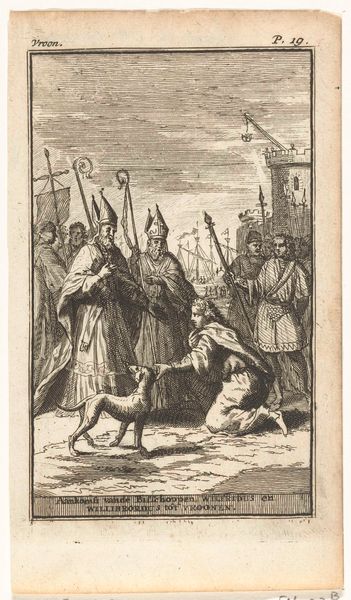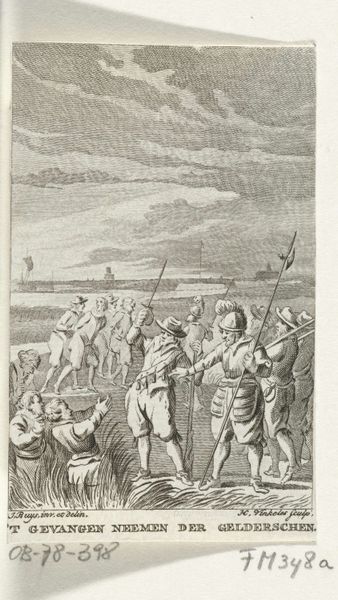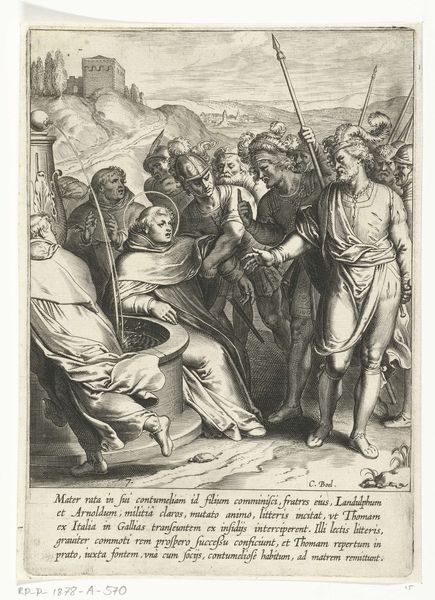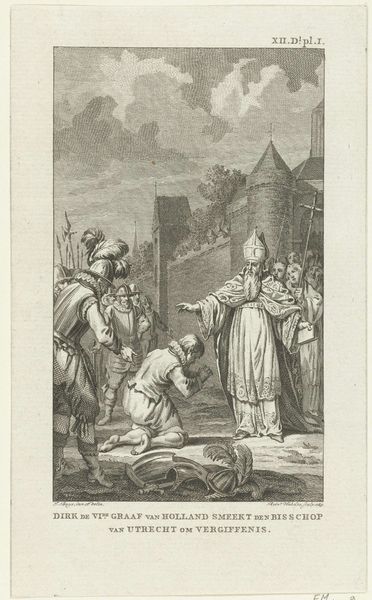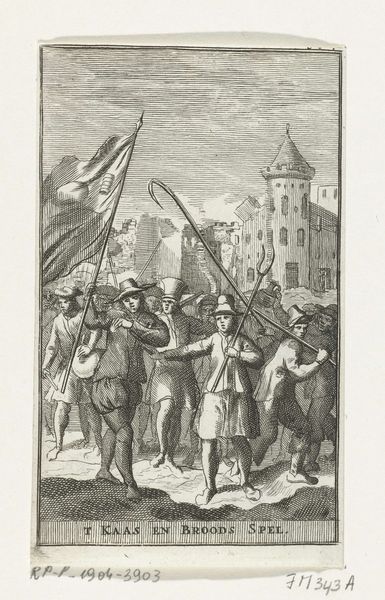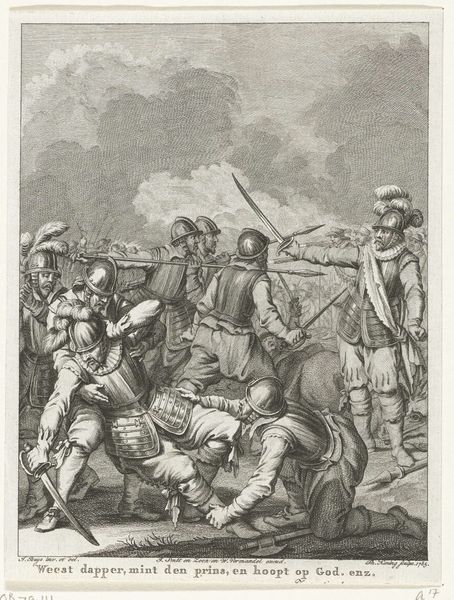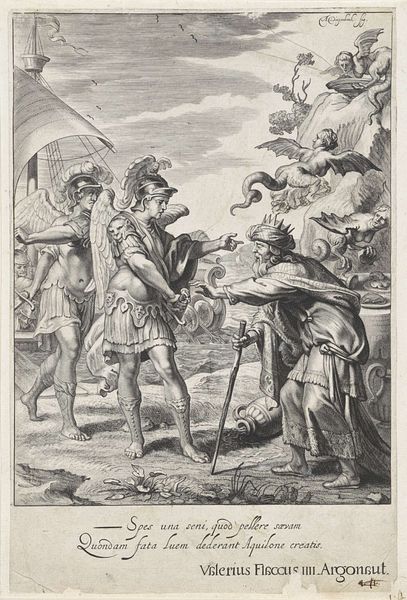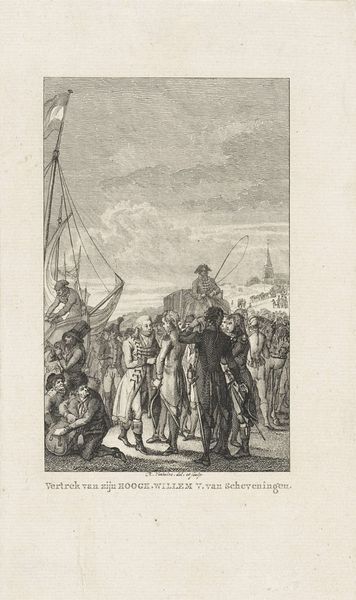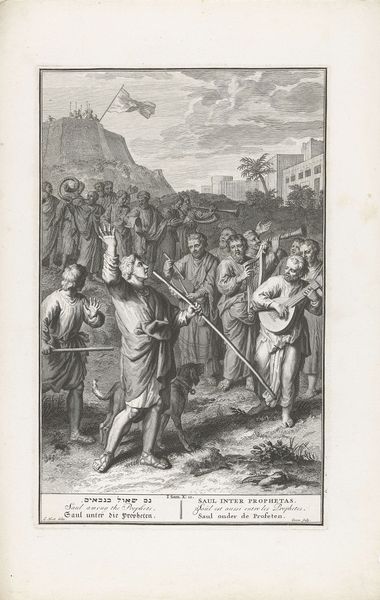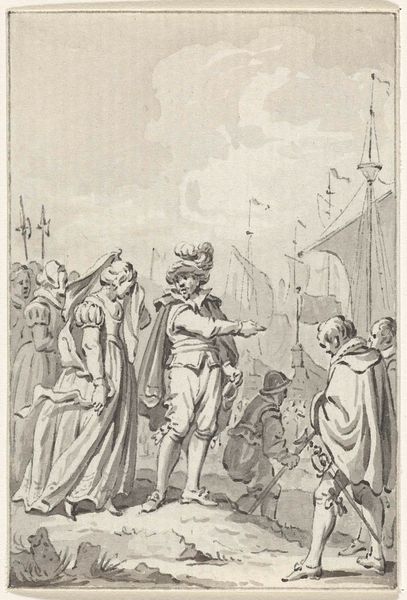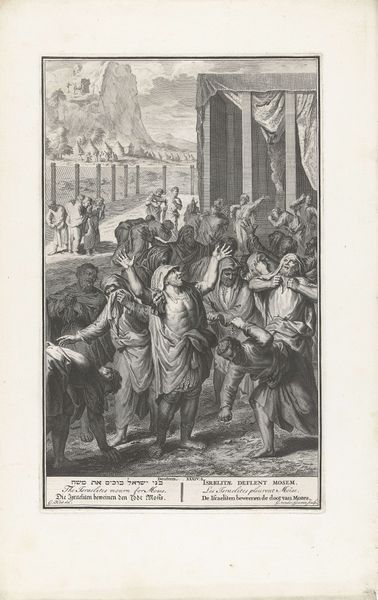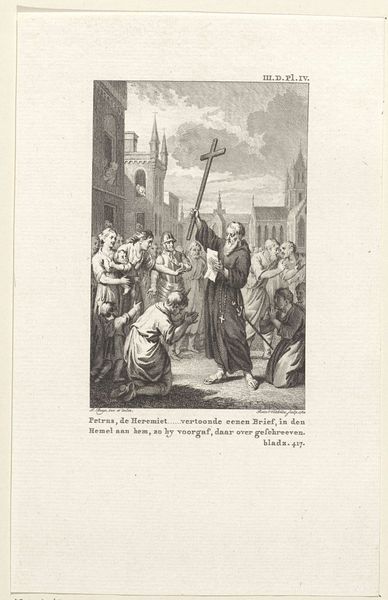
Aankomst van de bisschoppen Willibrord en Wilfridus in Vronen in 698 1700 - 1702
0:00
0:00
print, engraving
#
baroque
# print
#
old engraving style
#
figuration
#
history-painting
#
engraving
Dimensions: height 138 mm, width 85 mm
Copyright: Rijks Museum: Open Domain
Curator: Pieter van den Berge's engraving, made around 1700 to 1702, titled "Aankomst van de bisschoppen Willibrord en Wilfridus in Vronen in 698," depicts the arrival of Bishops Willibrord and Wilfridus in Vronen. Editor: The scene feels so formal and a little bit stilted. There's this dramatic kneeling figure and stiff-looking bishops. Everything feels very posed, despite presumably depicting a 'real-life' arrival. Curator: Absolutely, that rigidity speaks volumes. This piece belongs to a larger visual culture aimed at solidifying religious narratives. The power dynamics here are unmistakable: the act of kneeling demonstrates submission to the church's authority and divine mandate. Editor: And what’s intriguing is how the image seeks to naturalize that power. Placing these bishops centrally in the frame, elevating them, with attendants and a castle, contributes to constructing a visual representation of power. The kneeling person seems a supporting cast. Curator: Precisely! Consider that the image isn’t just representing an historical event, it actively constructs a specific interpretation of it, a message amplified through its baroque stylistic elements. Editor: Tell me more, it’s really interesting… Baroque, even in print, suggests a conscious decision to employ persuasive tactics. Beyond just documentation, it feels propagandistic. This image invites viewers to consider their roles in religious power dynamics. Are we, in a sense, also kneeling before this history? Curator: The placement of the image matters too. In what publication did it appear? Who was the audience? What socio-political function did it fulfill? These are vital questions we should address. Editor: And what does this 'arrival' truly signify? Are these colonizers? Conquerors? There are serious ethical implications embedded here concerning religious and cultural imperialism. It's never *just* an arrival, is it? Curator: No, it rarely is. This work offers insight not only into art historical depictions of religious figures but also into our continued, urgent engagement with those themes. Editor: Indeed. Thinking critically about such narratives, considering perspective and motivation – this engraving is far more relevant to us today than perhaps one might initially imagine.
Comments
No comments
Be the first to comment and join the conversation on the ultimate creative platform.
